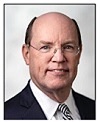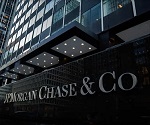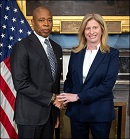-
Recent Posts
- Trump’s “Big Beautiful Bill” Is a Grotesque Giveaway to Fossil Fuel Billionaires While Adding $3.3 Trillion to Nation’s Debt
- Senator Chris Murphy Charges that Trump “Has Opened a Channel for Bribery”
- Congressman Casten: Trump’s Assault on the Rule of Law Is Causing Capital Flight Out of U.S. by Foreign Investors
- Trump’s Approval Rating Drops to 80-Year Low; IMF Says U.S. Tariffs Now Exceed the Highs During the Great Depression
- Nasdaq Has Lost More than 3,000 Points Since Trump’s First Full Day in Office in 2025; the Pain Has Barely Begun
- The Bond Crisis Last Week Was a Global No-Confidence Vote in U. S. President Donald Trump
- Trump’s Tariff Plan Guts $5 Trillion in Stock Value in Two Days; Senator Warren Calls for Emergency Action Before Markets Open on Monday
- Trump’s Attacks on Big Law, Universities, and the Media Have a Common Goal: Silence Dissent Against Authoritarian Rule
- Trump Administration Gives All Clear to Laundering Money through Shell Companies and Bribing Foreign Officials
- Four Megabanks on Wall Street Hold $3.2 Trillion in Uninsured Deposits – Which May Explain Senator Schumer’s Pivot to the GOP to Stop a Government Shutdown
- Here’s What Came Crashing Down Yesterday for Trump’s “Genius” Guy, Elon Musk: Tesla Stock, Access to Twitter (X), His Years of Secret Calls with Putin
- After Banning the Associated Press, Trump Is Now Targeting Specific Journalists That He Wants to See Fired
- Closely Watched Atlanta Fed Model Predicts Negative U.S. Growth in First Quarter
- Trump’s Gangster Diplomacy Makes Front Page Headlines Around the Globe
- Who Benefits Alongside Elon Musk If He Succeeds in Killing the CFPB: the Megabanks on Wall Street that Underwrite His Tesla Stock Offerings
- In Trump 1.0, the State Department Used Taxpayer Money to Publish a Book Elevating Elon Musk to a Superhero; It Was Funded by USAID, the Agency Musk Wants to Quickly Shut Down
- News Host Joy Reid Raises Threat of Trump Selling U.S. to Putin; Ten Days Later Her Show Is Cancelled
- Elon Musk’s DOGE Appears to Be Violating a Court Order; It Has Taken Down Hundreds of YouTube Videos that Educate Americans on How to Avoid Being Swindled
- Barron’s Releases Audio of Jamie Dimon Cursing Out His Workers at a Town Hall, as Dimon Plans to Dump Another One Million JPM Shares
- There’s One Federal Investigative Agency that Neither Trump nor Elon Musk Can Touch: It Just Opened an Investigation into DOGE
- Elon Musk’s Companies Were Under Investigation by Five Inspectors General When the Trump Administration Fired Them and Made Musk the Investigator
- Donald Trump Gives the Greenlight to Goldman Sachs and JPMorgan Chase to Return to Bribing Foreign Officials
- After Tech Geeks Built a Back Door to Loot Billions from FTX, Republicans Refuse to Investigate What Elon Musk’s Tech-Squad Did Inside the U.S. Treasury’s Payment System
- Former Prosecutor, Now U.S. Senator, Informs Tesla That CEO Musk May Be Violating Federal Law and to “Preserve All Records”
- Trump’s Hedge Fund Guy Is Now Overseeing the U.S. Treasury, IRS, OCC, U.S. Mint, FinCEN, F-SOC, and the Consumer Financial Protection Bureau
- As Elon Musk Begins Shutting Down Payments to Federal Contractors, a Strange Money Trail Emerges to His Operatives Inside the U.S. Treasury’s Payment System
- JPMorgan Chase Charged by Yet Another Internal Whistleblower with Cooking the Books
- We Asked Google’s AI Search Model, Gemini, Questions About the Fed and Wall Street Megabanks: It Got the Answers Dead Wrong
- With Trump and Melania’s Crypto Coins Likely to Raise Legal Challenges, Why Didn’t Trump Fire the SEC’s Inspector General in His Purge of IGs?
- Fossil Fuel Industry Could End Up Paying Tens of Billions for LA Wildfires and Deceiving the Public on Climate Change for Decades
- It’s Being Called the Biggest Grift by a President in U.S. History: Trump and First Lady Launch their Own Crypto Coins
- Trump Plans to Install a Fracking CEO to Head the Energy Department and Declare a National Emergency on Energy to Gain Vast Powers
- Fossil Fuel Money Played a Role in the Los Angeles Fires and the Push to Install Pete Hegseth as Secretary of Defense
- When It Comes to Wealth Retention in Retirement, Concrete May Be the New Gold
- Wall Street Watchdog Warns “Clock Is Ticking on a Coming Catastrophic Financial Crash”
- Wall Street Is Sending the Same Message to Americans on Fossil Fuel Financing that It Sent on Cigarettes: Drop Dead
- In a Six-Week Span, this Dark Pool with a Curious Past Traded 3.7 Billion Shares
- Wall Street’s Lobby Firm Hired Eugene Scalia of Gibson Dunn to Sue the Fed for Jamie Dimon
- Postmaster General Louis DeJoy Made $561,051 in Compensation in 2024, as Mail Costs Spiked and Delivery Deteriorated
- Fed Chair Jay Powell Sends a Bold Message to Trump and Tanks the Dow by 1123 Points
- The Head of Fixed Income at T. Rowe Price Makes the Scary Case for the 10-Year Treasury to Spike to 6 Percent
- $663 Billion in Cash Assets Have Gone Poof at the Largest U.S. Banks
- Donald Trump to Ring Bell at New York Stock Exchange Today as Hit List Posters Appear in Manhattan Targeting Wall Street CEOs
- Trump Has a Slush Fund to Prop Up the Dollar – Will He Use It to Prop Up Bitcoin Instead?
- A CEO Assassination; a Billionaire Heiress/NYPD Commissioner; a Secret Wall Street Spy Center – Here’s How They’re Connected
- Despite More than 1600 Tech Scientists Signing a Letter Calling Crypto a Sham, Trump Names a Crypto Cheerleader for SEC Chair
- The Fed Rings a Warning Bell: Hedge Funds and Life Insurers Are Reporting Historic Leverage
- Trump’s Nominee for FBI Director, Kash Patel, Has Businesses Financially Intertwined with Trump
- Donald Trump Is at Risk of Getting Named in a Fossil Fuels Conspiracy Lawsuit
- Trump Is Having Difficulty Getting a Lawyer to Accept the Nomination for SEC Chair: Here’s Why
Search Results for: Federal Reserve
Trump’s Approval Rating Drops to 80-Year Low; IMF Says U.S. Tariffs Now Exceed the Highs During the Great Depression

By Pam Martens and Russ Martens: April 28, 2025 ~ Common sense voters in the U.S. didn’t need an economics degree or a crystal ball to predict that putting Donald Trump in the Oval Office for a second term – a man unanimously convicted of 34 felony counts by 12 members of a U.S. jury prior to his election – was not going to produce a shining moment in history for the United States. Trump’s first 100 days in office in his second term arrives this week, and it comes on the wings of this headline: “Trump has lowest 100-day approval rating in 80 years.” That data comes from a new ABC News/Washington Post/Ipsos poll showing that only 39 percent of poll respondents approve of how Trump is performing as President. A solid majority, 55 percent, said they disapprove. Even more alarming for the U.S. economy – where two-thirds of GDP … Continue reading
The Bond Crisis Last Week Was a Global No-Confidence Vote in U. S. President Donald Trump

By Pam Martens and Russ Martens: April 13, 2025 ~ U.S. President Donald Trump’s reputation for chaos; his longstanding history of thumbing his nose at the rule of law; his unpresidential insults directed at world leaders and willingness to turn his back on longstanding U.S. allies; and his packing of top cabinet posts with preposterously unqualified loyalists – have now delivered the inevitable blow to two of America’s most critical financial assets in domestic and international markets: the U.S. dollar and U.S. Treasury securities. Instead of performing their usual role as safe havens in times of turmoil, they are now indelibly linked to the Trump brand of erratic behavior. Both the U.S. Dollar and U.S. Treasury securities are in a downtrend, with the 10-year Treasury note taking a wild plunge in value last week. Mark Blyth, a political economist at Brown University, was quoted in the New York Times today with this … Continue reading
Closely Watched Atlanta Fed Model Predicts Negative U.S. Growth in First Quarter

By Pam Martens and Russ Martens: March 4, 2025 ~ On the very day that Donald Trump is set to deliver a major address to a joint session of Congress, with a disapproval rating of 52 percent according to a CNN poll out on Sunday, the Federal Reserve Bank of Atlanta’s model for predicting U.S. economic growth is flashing red. The model is known as GDPNow and is highly respected for its accuracy. After an update yesterday based on new, incoming economic data, GDP for the first quarter is predicted to be -2.8 percent. The GDPNow staffers wrote this yesterday: “The GDPNow model estimate for real GDP growth (seasonally adjusted annual rate) in the first quarter of 2025 is -2.8 percent on March 3, down from -1.5 percent on February 28. After this morning’s releases from the US Census Bureau and the Institute for Supply Management, the nowcast of first-quarter real personal consumption expenditures … Continue reading
JPMorgan Chase Charged by Yet Another Internal Whistleblower with Cooking the Books

By Pam Martens and Russ Martens: January 31, 2025 ~ The International Consortium of Investigative Journalists (ICIJ) has gotten its hands on a blockbuster 35-page letter that a former JPMorgan banker sent to the bank’s Audit Committee of the Board of Directors in August 2023. The letter asserts that the bank has been ginning down the amount of capital it is required to hold by improperly using an accounting technique called “netting.” The whistleblower asserts that “this could have allowed JPMorgan Chase to generate an additional $2 billion in net income in one year alone.” The whistleblower indicates that he/she brought this alleged malfeasance to bank officials in 2018 but was “ultimately retaliated against and laid off in 2022.” That is becoming a common refrain by whistleblowers inside JPMorgan Chase: they say they are rewarded for bringing improper, or brazenly illegal, conduct to the attention of their superiors by being shown the … Continue reading
We Asked Google’s AI Search Model, Gemini, Questions About the Fed and Wall Street Megabanks: It Got the Answers Dead Wrong

By Pam Martens and Russ Martens: January 29, 2025 ~ We’ll get to Google’s AI Search model shortly, but first some necessary background. Like many of you, we spent a good part of our day yesterday reading up on DeepSeek, a Chinese startup that purports to have built an AI model that rivals U.S. industry leaders like OpenAI and Google – for a mere fraction of the cost. On Monday, the news that DeepSeek’s AI model might have rendered most of those sophisticated and expensive chips from Nvidia obsolete shaved $600 billion off the market value of Nvidia – the largest one-day dollar loss in a stock in U.S. market history. Adding to the nervousness, DeepSeek has made its AI model open-source, meaning its base code is publicly available for tech geeks in the U.S. and around the world to examine and build on. Also bringing out the worry beads in Silicon … Continue reading
Wall Street Watchdog Warns “Clock Is Ticking on a Coming Catastrophic Financial Crash”

By Pam Martens and Russ Martens: January 10, 2025 ~ The indefatigable Dennis Kelleher, Co-Founder and CEO of the Wall Street watchdog, Better Markets, has just released his organization’s monthly newsletter for January 2025 and it’s a humdinger. Kelleher warns that the financial deregulators that incoming President Donald Trump has packed into his administration means “that the clock is ticking on a coming catastrophic financial crash that will likely be much worse than 2008.” Kelleher adds that this “is not hyperbole.” He cites evidence from past financial crashes, writing: “…there is always a lag after deregulation and the creation of artificial liquidity. That was true for ‘roaring ‘20s’ followed by the crash and Great Depression; the ‘great moderation’ of the early 2000s followed by the crash and Great Recession; the deregulation of the first Trump administration in 2017-2020 that led to the 2023 banking crisis when 3 of the 4 largest bank failures … Continue reading
Wall Street’s Lobby Firm Hired Eugene Scalia of Gibson Dunn to Sue the Fed for Jamie Dimon

By Pam Martens and Russ Martens: December 31, 2024 ~ The Bank Policy Institute calls itself “a nonpartisan public policy, research and advocacy group…” In fact, it’s a registered lobbyist for the megabanks on Wall Street. The Chairman of its Board of Directors is Jamie Dimon, the Chair and CEO of JPMorgan Chase, the largest bank in the United States. The rest of its Board consists exclusively of the top executives of large banks, including Goldman Sachs, Citigroup, Bank of America and Wells Fargo. So when the Bank Policy Institute decides to sue the Fed, one of the key regulators of the Wall Street megabanks, you can be certain that Jamie Dimon has a dog in this fight. (Plaintiffs in the lawsuit against the Fed, which was filed on Christmas Eve, include other bank-funded groups as well.) Dimon sits atop not just the largest bank in the U.S. but also the bank … Continue reading
$663 Billion in Cash Assets Have Gone Poof at the Largest U.S. Banks

By Pam Martens and Russ Martens: December 16, 2024 ~ According to the December 6 release of Federal Reserve H.8 data, cash assets at the 25 largest U.S. banks have dropped by a stunning $663 billion from their peak levels on December 15, 2021. (See chart above, taken from the St. Louis Fed’s FRED graph, which is updated on an ongoing basis. Put your cursor on the FRED chart line here to get the weekly dollar figures.) Notice also on the chart that cash levels at the largest U.S. banks were a sea of calm for more than two decades prior to the financial crash of 2008, but since that time cash assets have displayed wild gyrations, rising sharply then precipitously plunging. It should provide no comfort to Americans that the wild gyrations on the chart above are a product of the central bank of the United States (the “Fed”) inserting itself, … Continue reading
Trump Has a Slush Fund to Prop Up the Dollar – Will He Use It to Prop Up Bitcoin Instead?

By Pam Martens and Russ Martens: December 10, 2024 ~ The dark veil behind which the U.S. political system has operated since the U.S. Supreme Court’s Citizens United decision and its progeny turned presidential elections into a subtle form of payoffs and kickbacks has been lifted. Donald Trump is handing out cabinet posts and ambassadorships to his largest donors in the most scandalous manner in U.S. presidential history. Now Trump’s crypto megadonors are demanding their own form of a kickback – a Bitcoin Strategic Reserve, where the U.S. government would, effectively, prop up the price of Bitcoin by buying up large amounts each year and holding it as a Strategic Reserve. (Skeptics might be forgiven for seeing that as a means for Bitcoin billionaires to sell their Bitcoin without driving down the price too much because there is a perpetual buyer on the other side of their trade.) Most Americans have heard … Continue reading
A CEO Assassination; a Billionaire Heiress/NYPD Commissioner; a Secret Wall Street Spy Center – Here’s How They’re Connected

By Pam Martens and Russ Martens: December 9, 2024 ~ On Friday, this headline appeared in The Guardian newspaper: “Trump Assembling US Cabinet of Billionaires Worth Combined $340 Billion.” Receiving much less attention is the fact that the indicted Mayor of New York City, Eric Adams, named a billionaire heiress, Jessica Tisch, as the new Commissioner of the New York City Police Department on November 20. Tisch has never been a police officer – of any rank. Nonetheless, she will now oversee 36,000 police officers and 19,000 civilian employees at the NYPD. Tisch took her office on November 25. Nine days later, an unprecedented assassination of the CEO of UnitedHealthcare, Brian Thompson, took place on a Manhattan sidewalk outside of the New York Hilton Midtown hotel on December 4. The UnitedHealth Group, Inc., the parent of Thompson’s employer, is a stock component of the Dow Jones Industrial Average with a half-trillion-dollar market … Continue reading

